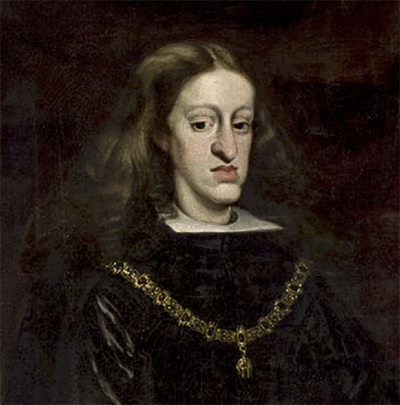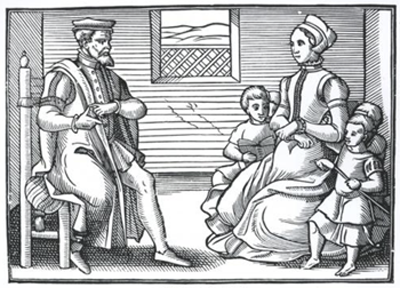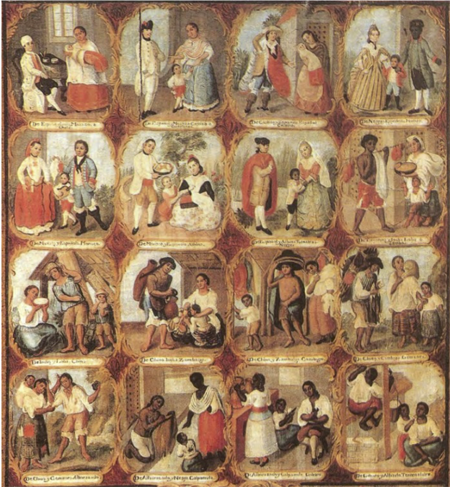Sexuality in the History of Empires
During the period from the fifteenth through the eighteenth centuries, known to historians as the "first age of global empires," the countries of Europe conquered or colonized more than half the world.
 Ruled centrally from the capitals of Europe, and yet sprawling outward into far-flung territories, these empires survived in part by controlling and regulating sexual relations.
Ruled centrally from the capitals of Europe, and yet sprawling outward into far-flung territories, these empires survived in part by controlling and regulating sexual relations.
In her October 19 Boswell Lecture, titled "Sexuality in the History of Empires," Professor Merry Wiesner-Hanks of the University of Wisconsin–Milwaukee made visible various ways in which imperial power and sexuality were closely intertwined. Her visit was funded in part by the Arts & Sciences Annual Fund.
"As empires were created and expanded in the early modern period, sexual regimes accompanied political regimes as a means of controlling people, manipulating differences, and cementing power," said Wiesner-Hanks. "In every empire, authorities developed hierarchies of classification and laws about sex, and created institutions and ideologies to support them."
 A primary concern of imperial survival was succession at the top, with hereditary dynasties relying on heterosexual procreation to produce an (ideally male) heir. Wiesner-Hanks noted two examples of reproductive "failure" that resulted in wars of succession, drawing Western Europe's imperial powers into attempted power grabs that extended into their colonies.
A primary concern of imperial survival was succession at the top, with hereditary dynasties relying on heterosexual procreation to produce an (ideally male) heir. Wiesner-Hanks noted two examples of reproductive "failure" that resulted in wars of succession, drawing Western Europe's imperial powers into attempted power grabs that extended into their colonies.
Further down the social hierarchy in the home countries, imperial regimes gradually conjoined the spiritual and civil policing of sexual behavior. Historians have called this process of social discipline "the criminalization of sin," with premarital and same-sex sexuality, extramarital births, prostitution, and other moral offenses newly subject to sanctions ranging from fines to corporal punishment to imprisonment or banishment. Protestant areas established marriage courts and "consistory" courts that administered ecclesiastical law. Catholic areas expanded the reach of bishops' courts and began to keep registers of marriages, births, and baptisms.
 While "ideals of social discipline and institutions designed to enforce these have left many traces," said Wiesner-Hanks, "It's more difficult to assess their actual impact."
While "ideals of social discipline and institutions designed to enforce these have left many traces," said Wiesner-Hanks, "It's more difficult to assess their actual impact."
Many accommodations and workarounds persisted, especially in rural areas, and the late seventeenth century witnessed the development in large cities of homosexual subcultures identified through unique styles of dress, behavior, slang, and meeting places.
And in the colonies?
Far from the imperial capitals and home countries, the colonies presented different possibilities and challenges for regulating sexual relations.
"Where Christian practices conflicted with existing patterns, or with the realities of life in colonial settings, they were often adopted selectively or modified in a process of creolization," said Wiesner-Hanks. "What emerged were new forms that mixed local and imported practices."
Cohabitation and sexual relations might begin with a traditional exchange of gifts, for example, with the marriage solemnized and children baptized at a later date by a visiting pastor.
 The question of intermarriage with the local population was either fraught or embraced, depending on the colony. Spanish and Portuguese colonial authorities recognized the practice and created a complex system of categories for persons of mixed ancestry. A 1691 Virginia law forbade marriage between an English or "other white man or woman" and anyone of another race.
The question of intermarriage with the local population was either fraught or embraced, depending on the colony. Spanish and Portuguese colonial authorities recognized the practice and created a complex system of categories for persons of mixed ancestry. A 1691 Virginia law forbade marriage between an English or "other white man or woman" and anyone of another race.
On the other hand, "Dutch authorities were less systematic in their approach to ethnic mixing," said Wiesner-Hanks. "Directors of the Dutch United East Company encouraged sexual relations and even marriages between European men and indigenous women in Batavia and other Dutch colonies, as a means of making alliances, cementing colonial power, and increasing the population."
The connection between politics and sexuality in most of recorded history is so close that it generally has been invisible to historians – a deficit Professor Wiesner-Hanks addresses in her forthcoming work "Sexuality" in A Cultural History of Western Empires in the Age of Enlightenment (1650-1800), edited by Ian Collier. Volume 4 in A Cultural History of Western Empires, series editor Antoinette Burton (Bloomsbury Academic).
Editor's note: The October 2018 issue of American Historical Review features an article by Mathew Kuefler assessing the assessing the importance of John Boswell’s book, Christianity, Social Tolerance, and Homosexuality (1980).
 Skip to main content
Skip to main content
